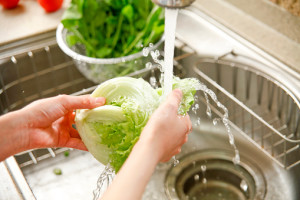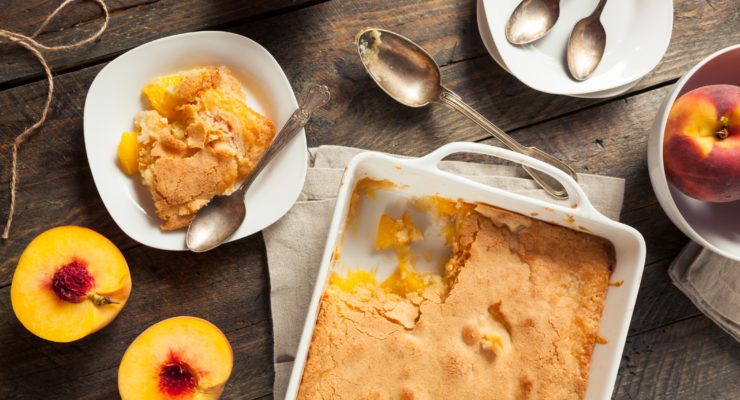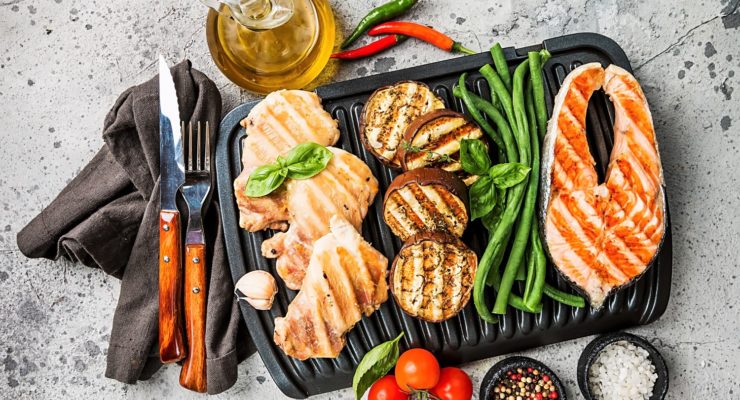12 Food Safety Tips You Must Know
Article posted in: Diet & Nutrition
Keeping a clean kitchen is more than just a matter of appearances. According to the U.S. Food and Drug Administration (FDA), 1 in 6 Americans experiences some form of foodborne illness each year. And these illnesses account for 128,000 hospitalizations and 3,000 deaths annually. So how do you win the food safety fight? Keep in mind these fundamentals courtesy of the FDA, and keep your kitchen—and your family—an illness-free zone.
Follow the 20 second rule Take your time at the sink―washing your hands for at least 20 seconds using soap and warm, running water can help prevent illness-causing bacteria from spreading from your hands to your food, utensils and unsuspecting dinner guests.
Don’t skimp on scrubbing Be sure to thoroughly clean your countertops, cutting boards, dishware and utensils with hot soapy water after every use to prevent bacteria from spreading throughout your kitchen.
Wash fruits and veggies Think peeling your produce protects you from bad bacteria? Think again. As you peel or cut your fruits and veggies, bacteria can spread from the food’s skin and outer parts to the inside. To prevent this, be sure to wash all produce—even the peeled stuff—under running water or with a clean scrubbing brush before you dig in.
Separate your surfaces Avoid cross-contamination by using one cutting board for meats, poultry, seafood and eggs, and another for produce. Always avoid placing cooked food on any dish or surface that previously contained raw meat, poultry, seafood or eggs.
Keep foods apart in your cart—and in your fridge Be sure to keep meat, poultry, seafood and eggs separate from other purchases in your grocery bags because juices from these foods can drip and contaminate other foods, spreading bacteria. The same applies to your refrigerator. Your safest bet is to designate certain sections of your fridge for each type of food. Keep meats or other foods that may drip liquids on bottom shelves.
Keep it hot The risk of bacterial growth increases as food cools. The drop in temperature that occurs after a food item is removed from heat is conducive to bacterial growth. But by keeping your foods at 140˚F using a heat source—such as a chafing dish, warming tray or slow cooker—you can help prevent this growth.
Microwave The best way to reduce the harmful bacteria in your foods is to microwave them at 165˚ or higher. Always remember to cover, stir and rotate foods to make sure all parts are cooked sufficiently. Don’t ignore instructions to let microwaved foods “stand” or “cool” as this completes the cooking process. Unsure if your food is cooked enough? Check the internal temperature with a food thermometer, making sure it’s reached at least the minimum internal temperature recommended. Unsure what’s a safe temp? For beef, pork, veal, lamb, fish, shellfish and ham, shoot for at least 145˚. For ground meats and eggs, 160˚ is recommended. For poultry, leftovers and casseroles, 165˚ is a safe minimum internal temperature.
Refrigerate Don’t leave perishable foods sitting out. Bacteria can grow in these foods within two hours―and even faster in the heat. Make sure to get your perishable items in the fridge as quickly as possible: the cold temperatures will slow the growth of illness-causing bacteria. Keep the fridge temperature at 40°F or below, and make sure to clean your fridge often, because bacteria can spread through spills and drips.
Thaw smart Because bacteria can grow very quickly at room temperature, you should avoid thawing or marinating food on the counter. Instead, thaw your foods in the microwave or refrigerator. You can also put frozen items in a watertight plastic bag and submerge them in cold water. Just be sure to change the water every 30 minutes, and cook food immediately after thawing.
Trash it Know when to toss older food and leftovers. Don’t rely on the way your food looks or smells to determine whether it’s still good―these are not accurate indications of whether bacteria has begun to grow. Here’s a good rule of thumb: leftovers can be kept in the refrigerator for three to four days, or kep) in the freezer (0° F or below) for three to four months. Although frozen foods are technically safe indefinitely, flavor and quality can be compromised when they are stored in the freezer for long periods.








